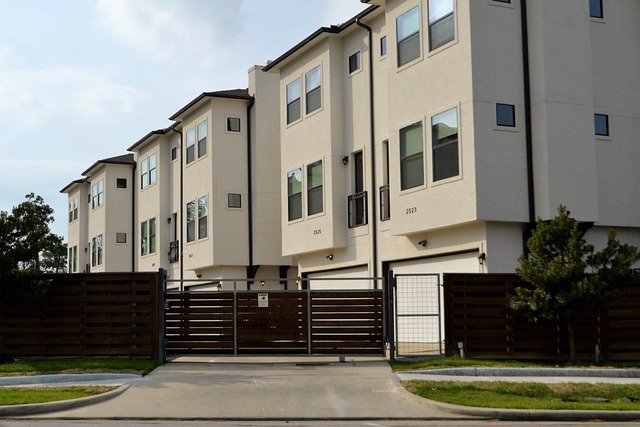Tree Removal Costs: What You Really Need to Know
Tree removal can be a significant investment for homeowners, with costs varying dramatically based on factors many people don't consider upfront. From hidden fees to safety requirements, understanding the true cost of cutting down a tree helps you make informed decisions and avoid unexpected expenses. Whether you're dealing with a dangerous tree threatening your property or simply need to clear space for landscaping, knowing what drives pricing in the tree services industry will save you time, money, and potential headaches.

What Really Drives the Cost of Cutting Down a Tree
The price of tree removal isn’t just about the tree’s size, though that’s certainly a major factor. Several key elements determine your final bill, starting with the tree’s height, diameter, and species. A 15-metre eucalyptus requires different equipment and expertise than a 5-metre bottlebrush. Location plays a crucial role too – trees near power lines, buildings, or in tight spaces require specialised techniques and additional safety measures.
Tree condition significantly impacts pricing as well. Healthy trees are often more challenging to remove because their strong wood requires more cutting, while diseased or dead trees may be more dangerous due to unpredictable falling patterns. The time of year also matters, with storm season often bringing premium pricing due to high demand and urgent safety concerns.
Hidden Fees and Extras Most Tree Services Won’t Mention
Many tree removal quotes seem reasonable until the hidden costs surface. Stump grinding is rarely included in basic removal prices, yet leaving stumps creates ongoing problems with pests and regrowth. Debris removal is another common extra – some companies will cut down your tree but leave you with tonnes of branches and logs to dispose of yourself.
Permit fees can add hundreds to your bill, especially for protected species or trees in heritage areas. Council requirements vary significantly across Australia, and reputable companies should handle permit applications, but the costs typically pass to homeowners. Additional charges may include crane rental for complex jobs, after-hours work, or extra cleanup beyond basic debris removal.
How to Choose a Tree Removal Company Without Getting Burned
Selecting the right tree service provider requires careful research beyond comparing quotes. Verify that companies hold proper insurance coverage, including public liability and workers’ compensation. Licensed arborists bring expertise that unlicensed operators can’t match, particularly for complex removals or protected species.
Request detailed written quotes that break down all costs, including potential extras. Reputable companies conduct on-site assessments rather than providing phone estimates. Check reviews and ask for recent references, but be wary of companies going door-to-door or demanding upfront payment. Professional tree services typically require deposits only for large jobs and never full payment before work begins.
The Real Price of Safety When Removing Problem Trees
Safety considerations significantly impact tree removal costs, but cutting corners here can lead to catastrophic consequences. Professional equipment like cranes, bucket trucks, and rigging systems costs thousands to purchase and maintain, reflected in service pricing. Certified arborists invest years in training and continuing education to handle dangerous situations properly.
Insurance premiums for tree services are substantial because the work carries inherent risks to workers, property, and bystanders. When companies quote lower prices by skipping safety measures or proper insurance coverage, they’re transferring risk to you. Property damage from amateur tree removal can cost tens of thousands of dollars, making professional services a worthwhile investment.
Comparing Tree Removal Services: What’s Worth Paying For
Understanding pricing differences between tree removal companies helps identify good value versus unnecessary expenses. Premium pricing often reflects superior equipment, experienced crews, and comprehensive insurance coverage. However, the most expensive option isn’t always the best choice for your specific situation.
| Service Provider | Basic Tree Removal | Stump Grinding | Additional Services | Estimated Cost Range |
|---|---|---|---|---|
| Jim’s Trees | Standard removal, debris cleanup | Available separately | Pruning, hedge trimming | $300 - $4,500 |
| Treeify | Complete removal service | Included in packages | Emergency services, consultation | $400 - $5,000 |
| Local Council Contractors | Basic removal only | Separate service | Limited additional options | $250 - $3,500 |
| Specialist Arborists | Comprehensive assessment and removal | Optional add-on | Tree health reports, conservation advice | $500 - $6,000 |
Prices, rates, or cost estimates mentioned in this article are based on the latest available information but may change over time. Independent research is advised before making financial decisions.
Value-conscious homeowners should prioritise companies offering transparent pricing, proper credentials, and appropriate insurance coverage. While premium services might include extras like same-day quotes or extended warranties, basic professional removal from reputable companies often provides the best balance of cost and quality. Consider your specific needs – emergency removal requires different expertise than routine landscaping work.
Tree removal represents a significant investment in your property’s safety and aesthetics. By understanding the factors driving costs, recognising potential hidden fees, and carefully selecting qualified professionals, you can ensure your tree removal project proceeds smoothly without unwelcome surprises. Remember that the cheapest option often proves most expensive when problems arise, making thorough research and proper planning essential for successful outcomes.




